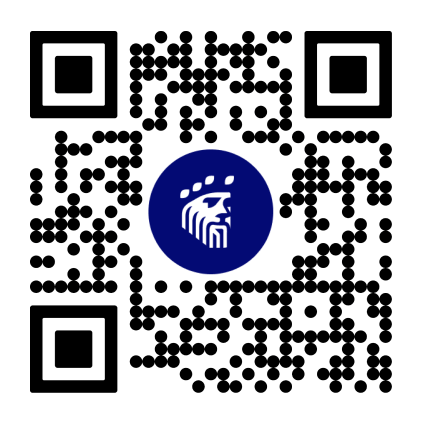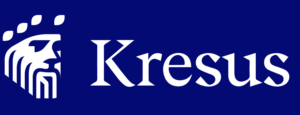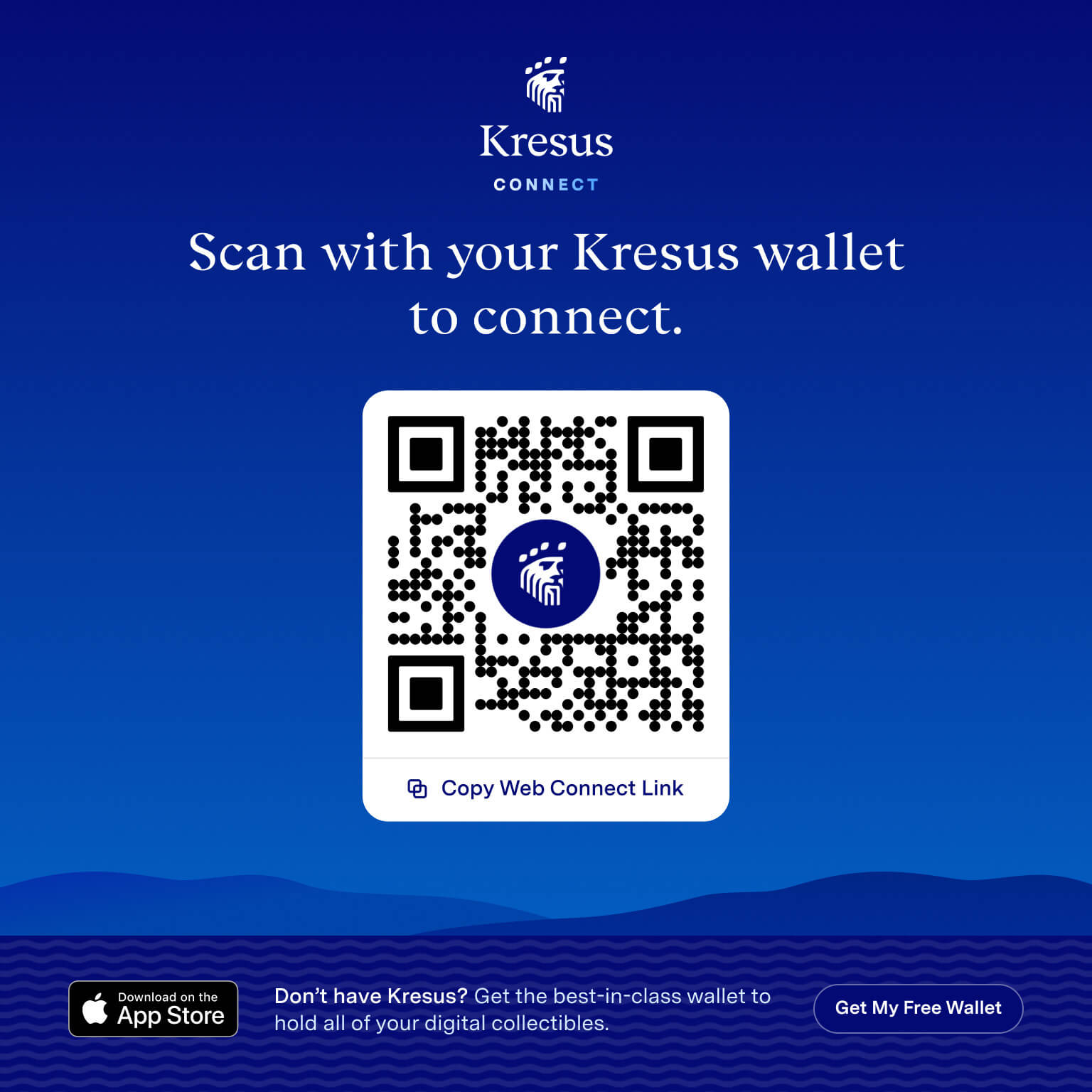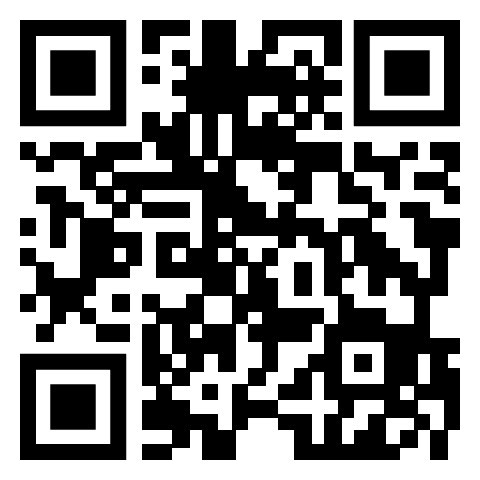Though web3 is vast and fast-expanding, it’s fair to say it’s still in its early days. Perhaps the first tell that there’s work to be done is the user experience in web3. Let’s just say… it leaves something to be desired.
In spite of that, early adopters have still quickly embraced the exciting possibilities in DeFi, NFTs, DAOs, and beyond. However, if you’re not careful, your excitement could result in real losses.
The Kresus Super App
- Cutting edge security. Total transparency
- Easy to set up. Impossible to get locked out
- A dynamic place to learn, collect, and connect
Get it now. Scan the QR code

That’s why, in an effort to help you avoid getting rekt, we’ve built out the ‘sparknotes’ on how you can avoid losing your assets. With these tips and your Kresus wallet, you’ll be able to navigate the wild west of web3 with confidence.
A Brief Intro to Web3 Products
Users entering the digital asset universe tend to have a similar ‘onboarding’ experience: they deposit money into a centralized exchange such as Coinbase or Binance and buy a little bit of Bitcoin or Ethereum. Then, they tend to let it sit there… until they want to dive deeper.
In that sense, you can think of web3 products as an iceberg. At the top, you have the highly-visible, easy-to-use, and ‘low-barrier to entry’ products which offer a cushy onramp into web3. This ease of use can come at the expense of security, optionality or income, but for the web3 curious, delving below the surface offers even more opportunities—and risks.
For that reason, it’s easy to group web3 products into three categories, which users get gradually more familiar as they submerge themselves in the scene. They include centralized exchanges, wallets, and decentralized apps.
- Centralized exchanges (CEXes): Centralized exchanges offer the ability to purchase, sell, store, and send digital assets. As a result, they hold a substantial amount of the world’s crypto, which makes them a custodian. CEXes offer a number of other products besides buying and selling, but for most users, they will be their introduction and onramp into the world of web3. Think: Coinbase, Binance, Uphold.
- Wallets: These are the ‘Google Chrome’ or ‘Safari’ of the blockchain. As users get more experienced with crypto, want to explore the blockchain, or self-custody their assets, wallets become a one-stop shop for interacting with the decentralized internet. Think: Kresus, MetaMask, Coinbase Wallet.
- Decentralized apps (dApps): DApps are applications which allow users to interface with a smart contract on the blockchain, often with the help of a wallet. Many of the most popular dApps are decentralized exchanges (DEXes) like Uniswap or PancakeSwap, but other popular apps include NFT marketplaces like OpenSea.
Things To Know About Centralized Exchanges
Most people’s first, and only, interaction with crypto and digital assets is on centralized exchanges like Coinbase, Binance, and Uphold. That’s because centralized exchanges offer users an easy way to buy digital currencies and assets—and a painless way of storing them.
Also Read:
When you rely on somebody to keep your crypto safe, you may be taking on a risk. Holding your coins, tokens, or other assets at a centralized exchange or service is not like holding it at a bank—there is no FDIC insurance, and there are no guarantees.
In spite of having no guarantees, millions of people still hold their crypto on exchange. They assume that the credibility, funding, and ease of use in the product means their funds are “safu,” but just in the last two years, there have been fantastic losses from centralized exchanges and custodians: less credible crypto exchanges have gone bankrupt, been hacked, lost vital funding and shut down, gambled away user funds, and any combination of these things.
That doesn’t mean that you should run to pull all your money from centralized crypto services—many upstanding exchanges offer a valuable product that allows users to get their money on and off the blockchain. However, its convenience is by no means a guarantee of safety, so bare that in mind before keeping a lot of crypto in somebody else’s wallet.
Secure your account
If you’re going to use centralized exchanges, you’ll need to go the extra mile. Just because centralized exchanges have gleaned a reputation for being safer, you could still be your own weakest link:
- Set a secure and unique password. You don’t need to have a different password for each platform, but consider setting a unique password for your social media/emails and financial accounts. Make an effort to change your password every six months.
- Activate device-side two-factor authentication. Many crypto exchanges and communication services allow you to set up two-factor authentication by text message or email. Do not do this: it is not particularly secure. Instead, download an app like Authy and set up device-side two-factor authentication.
- Create a new email account without identifiable information. Whenever you give personally-identifiable information about yourself to a company, it can end up in the hands of scammers, phishers, or social hackers. Consider creating a new email account without your name or other personal information in it—and plan to change emails in the case that a major hack or leak of information happens.
This might seem like a no-brainer, but poor security is the most common way that crypto users get rekt. Many people recycle old passwords, use SMS two-factor authentication, and use emails with personally identifiable information. These are all big no-nos for keeping your crypto safe.
Have a plan for storing large sums of crypto on exchange
It’s never a wise idea to store large sums of crypto on exchange, but if you’re going to rely on an exchange or custodian, consider looking into other ways to keep your crypto secure.
For example, some exchanges offer vaults, which time-lock your crypto in the case of withdrawal. Others might allow you to require more verification or to whitelist addresses for withdrawals before moving your crypto or money.
Exercise good OPSEC
Good OPSEC—which stands for operations security—is often ignored, but is crucial when interfacing with web3. While web3 is a fun and exciting space, it is not always filled with good actors.
Having a secure account will go a long way, but there are other things to consider:
- Be careful about your identity and personal information. Do not give out your full name, address, date of birth, or other identifiable information to vendors you do not trust.
- Purge or delete old accounts. You should delete old accounts on platforms that you do not use.
- Remove your information from public records. In the United States, many websites monetize your personally identifiable information—and give it away online. This makes you vulnerable to doxxing or other threats. You can delete this information manually or pay for a platform to do it for you.
This is not meant to scare you, but to make you safer—not just in crypto, but against all threats to your finances and well-being.
Stay studied on your custodians
Unlike a bank or broker-dealer, crypto exchanges are not insured through agencies like the FDIC or SIPC. As a result, this means that staying up to date on the latest with your custodians becomes super important.
However, that’s not always easy to do: the health of crypto exchanges is not always easy to gauge, but some crypto users still saw the signs before the shock collapse of major exchanges last year. Some were even able to take their money out of the platforms before their unfortunate collapse.
The problem with a bank run is that eventually, somebody loses.
To avoid taking a loss, you should avoid crypto exchanges that don’t publish transparency reports, either independently or as part of their proceedings as a publicly-traded company. You should also keep an eye on trends affecting crypto businesses.
Things To Know About Wallets
As crypto hobbyists turn into crypto experts, they’ll gradually venture beyond the walls of centralized custodians and exchanges—and they’ll start custodying their own money in wallets.
Wallets are your way of interacting with the blockchain and decentralized internet. In the early days of crypto, wallets had to be installed on laptop or desktop computers, which had to ‘sync’ with blockchains before processing transactions.
In the last few years, wallets have advanced quite a bit. And with Kresus, wallets have taken an even bigger stride—you can now benefit from the product experience and ‘guard rails’ of a centralized exchange, all while knowing your assets are safe and sound.
Get a Wallet with Added Security and Recoverability
With centralized exchanges and custodians, there are many single points of failure—emails, passwords, two-factor authentication, and other verification. With legacy wallets, your private key is your only way of accessing your assets.
Consequently, that means that your private key is also the only way somebody else will access your assets. This means that securing your private key is crucial; if you lose it, you’ll lose access to your crypto. If somebody else gets it, they’ll be able to steal your crypto.
New wallets are reducing these anxieties for the crypto-curious, though. With a wallet like Kresus, you won’t have to worry about getting locked out. Because of Kresus’ multisig capabilities, you’re still truly in control of your crypto—but our team can always get you back in.
Make Transacting Easy and Painless
Regardless of if you use a wallet, you’ll still need a way to buy and sell crypto—which means you’ll be using an exchange to onramp from your native currency.
Anybody who does transfers with crypto knows from experience: it’s not always fun. You could very easily send to the wrong address, the wrong blockchain, or make another mistake.
Kresus has ‘goof-proofed’ this common anxiety among crypto users, making it so you won’t bungle a transfer or lose your assets. You can buy, sell, and transfer your crypto without sweating over whether you forgot something—and with multichain support and a free .kresus username, you no longer have to quadruple-check a long hexadecimal address every time to need to move your assets.
Get the Benefits of a Hardware Wallet (Without The Hard)
In crypto, users generally set up two wallets: a hot wallet (for transfers and interacting with blockchain apps) and a cold wallet (for long-term storage.)
Generally, users prefer software wallets like Kresus or MetaMask for their hot wallets, while purchasing a cold wallet like a Ledger or Trezor ****************************for long-term storage of their coins. However, with features like Kresus’ forthcoming Vault feature, you won’t have to alternate—your crypto can stay hot and cold.
At the end of the day, that means you don’t have to sacrifice security to explore the web3 universe. You can rest easy knowing your coins are secure and you can browse the blockchain with ease. However, you might want to know a thing or two about decentralized apps before you dive in…
Things To Know About Decentralized Apps (dapps)
If you’re using a wallet, there’s a good chance that you won’t just be using it to store your assets—you’ll probably be using it to explore the decentralized web, the blockchain, and its wealth of opportunities.
With a wallet like Kresus, you can unlock the world of NFTs, DeFi, DAOs, and other smart contracts. In the world of crypto, people refer to these offerings as protocols or dapps. Being involved with dapps is exciting, but there’s still a few things you should know before you dive in:
Decentralized apps are pretty cool, but can be expensive
Decentralized apps are a marvel of the blockchain. They’ve opened up money markets, communities, art houses, and metaverses across the decentralized internet, all of which are available for you to explore.
Interfacing with them, however, can come with a cost. Unlike centralized exchanges, where the fees are not always visible, blockchains have very clear transaction fees.
When you interface with a dapp or smart contract, you’ll pay a transaction fee for each interaction you make. While some popular blockchains like Ethereum and Bitcoin will be more expensive, newer blockchains like Polygon and Solana are comparatively cheap. You’ll be able to explore all of these blockchains, and understand the costs, before you make any moves with a wallet like Kresus.
Decentralized apps are not perfect
Decentralized apps are built by humans, which are not perfect. As a result, it stands to reason that dapps will not be perfect either.
While many dapps have been around for years without problem, the increasing popularity of web3 has given rise to hundreds of dapps. Some have been prone to error, hacks, or bugs which can be very frustrating—especially to the average user.
The Rekt News leaderboard, which tracks crypto or blockchain hacks, demonstrates the stunning scale of these losses. Unfortunately, this is nothing that a wallet can prevent—you’ll have to do research before diving into an exciting new project.
Exercise caution when interfacing with a dapp
Everybody wants to be first to try the cool new thing, but be careful. Many users’ wallets get compromised while interfacing with bad dapps. Always check URLs, do research on projects or dapps before connecting your wallet, don’t blindly chase yield or the promise of free money, scrutinize everything that people tell you, and check for audits of projects.
Explore web3 in Peace with Kresus
Web3 is a complicated, complex, but exciting evolution of the web. Despite a lot of the hurdles, there is a lot to explore.
Kresus was designed to make web3 accessible for everyone by making it easy to interact with the blockchain while providing best-in-class security with the capabilities of several tools in one. This means that you can rest easy knowing your funds are safe, that you can never get locked out, and that you can actually understand what you’re doing.
To get started, download Kresus today.













